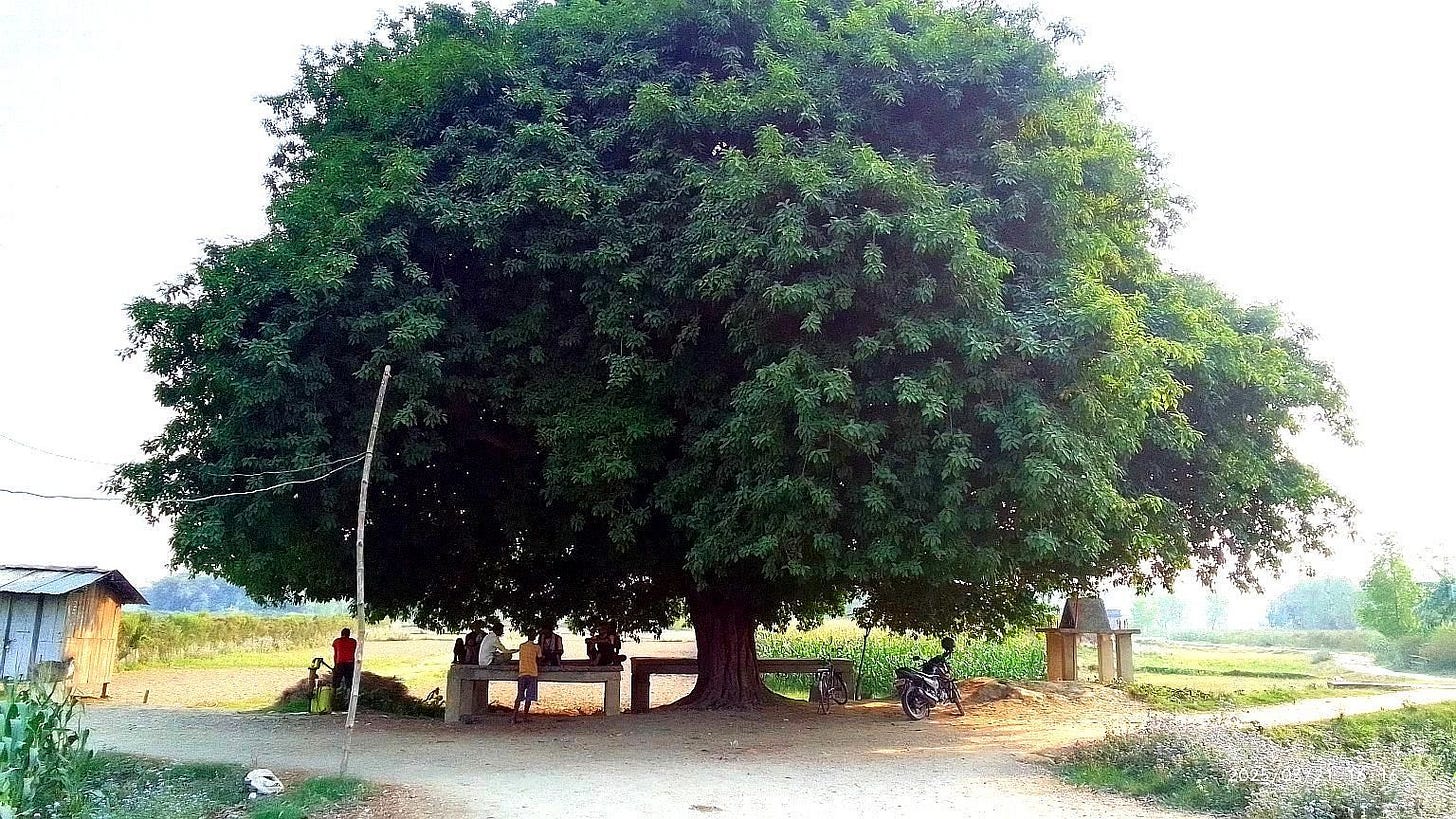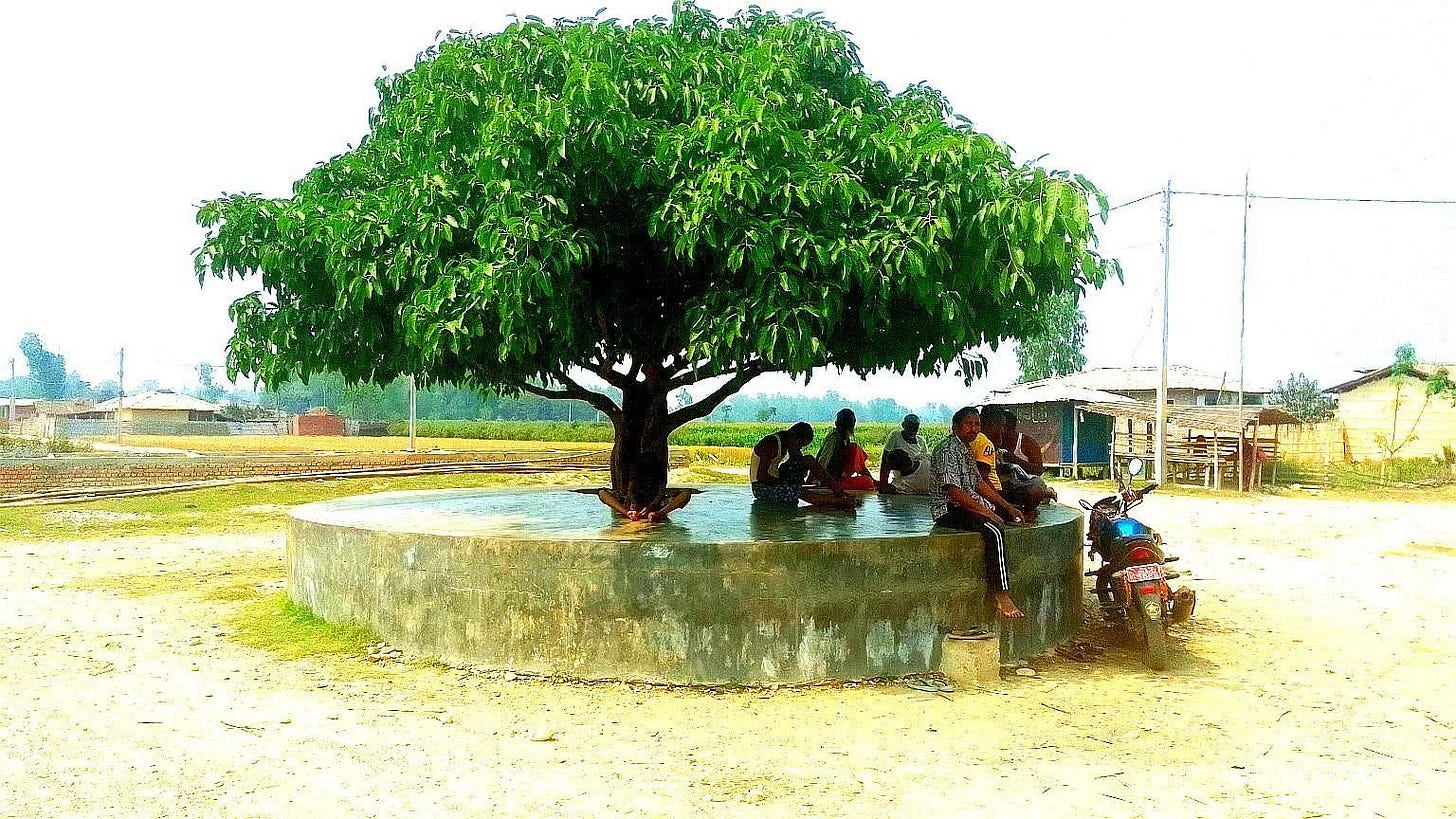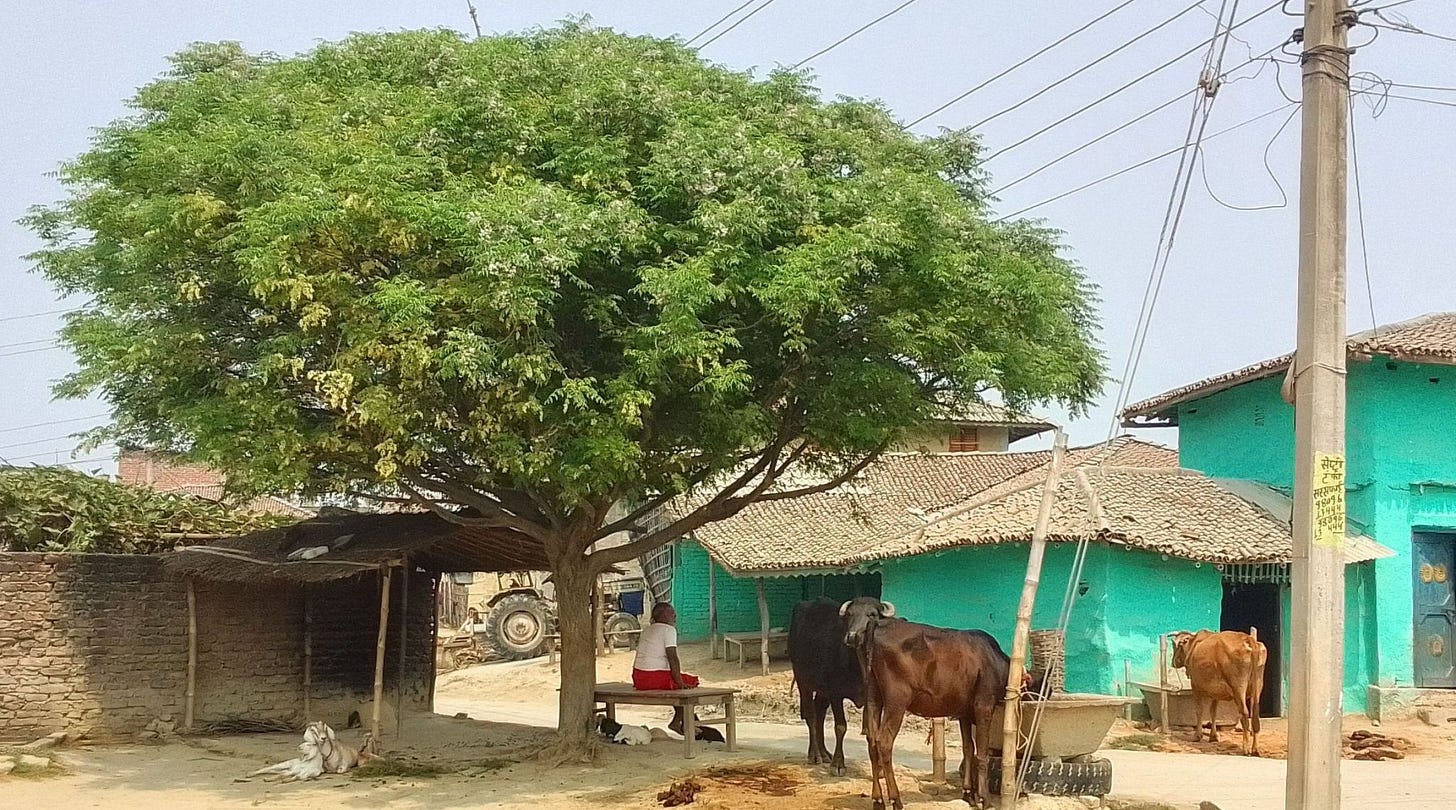The Enduring Legacy of Chautari in Terai: A Detailed Analysis and Call for Preservation
Introduction
In the verdant plains of Nepal’s Terai region, a lowland expanse hugging the southern border with India, the chautari stands as a timeless emblem of communal harmony, cultural heritage, and ecological resilience. These traditional resting platforms, typically constructed beneath the sprawling canopies of sacred trees like the pipal (Ficus religiosa) or banyan (Ficus benghalensis), have served as vital social hubs, spiritual sanctuaries, and practical rest stops for centuries. Rooted in the region’s history as a bustling trade corridor and home to diverse ethnic groups such as the Tharu, Maithil, and Bhojpuri, chautari embody a unique blend of utility and tradition. Yet, as modernization sweeps across the Terai, these cherished structures face existential threats from urbanization, neglect, and shifting societal values. This article delves into the historical evidence of chautari, their multifaceted importance, the challenges they confront today, and actionable strategies to ensure their preservation for future generations.
Historical Evidence of Chautari in the Terai
The history of chautari in the Terai is interwoven with the region’s role as a crossroads of trade, migration, and pilgrimage. Stretching between Nepal’s rugged hills and India’s northern plains, the Terai’s flat, fertile terrain has long facilitated the movement of merchants, travelers, and religious devotees. Historical records from the Malla dynasty (12th–18th centuries) and the Shah rulers (18th–20th centuries) suggest that chautari were established as resting spots along these ancient routes, offering shade and respite in the region’s sweltering climate. British colonial documents from the 19th century further corroborate their significance, noting their role in supporting trade and communication networks between British India and Nepal.
Archaeological evidence, though sparse, provides additional clues. Inscriptions and carvings near cultural hubs like Janakpur and Lumbini—key sites in the Terai—hint at chautari being used for community gatherings as early as the Buddhist and Hindu periods. Indigenous folklore, particularly among the Tharu, describes these platforms as meeting points for storytelling, dispute resolution, and rituals, suggesting a pre-modern origin that predates formal documentation. Many chautari were likely established by local rulers, merchants, or philanthropists as acts of social goodwill, a practice aligned with Nepal’s tradition of communal infrastructure.
The sacred trees anchoring chautari further underscore their historical depth. Pipal and banyan trees, revered in Hinduism and Buddhism as symbols of enlightenment and eternity, were often planted deliberately to mark these spaces, merging spirituality with practicality. Over time, these sites became integral to the Terai’s socio-economic fabric, serving as informal waypoints in a landscape defined by agriculture and mobility.
Importance of Chautari in the Terai
The chautari in Nepal’s Terai region hold profound significance, weaving together social, cultural, ecological, and spiritual threads that have enriched local life for centuries. As social and cultural hubs, these shaded platforms beneath pipal or banyan trees served as vital gathering spots where elders resolved disputes, villagers shared news and oral histories, and festivals in unfolded, fostering unity among diverse ethnic groups like the Tharu and Maithil. Ecologically, the trees provided essential shade in the Terai’s scorching climate, stabilized soil, and nurtured biodiversity by supporting birds, insects, and medicinal plants, creating thriving micro-ecosystems. Historically and practically, they supported the region’s role as a trade corridor, offering respite to merchants and travelers along ancient routes, thus bolstering economic and social connectivity.
In Terai region, Chautari’s trees (e.g., Ficus religiosa and Ficus benghalensis) are agroecological keystones, supported by empirical studies. Research by Dhakal et al. (2019) in Agriculture, Ecosystems & Environment highlights their role as biodiversity hubs, hosting over 50 bird species and pollinators like native bees, which enhance crop yields by up to 30% in adjacent fields. Their dense root systems, as noted in a Nepal Agricultural Research Council (NARC, 2021) study, reduce soil erosion by 40–60% in flood-prone areas, while leaf litter increases soil organic matter by 15–20%, improving fertility for rice and wheat cultivation. A 2020 ICIMOD report found that Chautari canopies lower ambient temperatures by 3–5°C, mitigating heat stress for crops and livestock—critical as the Terai faces rising temperatures. Hydrological studies (Jha et al., 2018) demonstrate their role in groundwater recharge, elevating water tables by 1–2 meters in nearby farms during dry seasons. Furthermore, ethnobotanical surveys (Shrestha et al., 2022) reveal that Chautari-associated wild relatives of mango and jamun serve as genetic reservoirs for drought-resistant traits, vital for climate adaptation. Despite these benefits, satellite data (DoF, 2023) shows a 25% decline in Chautari cover since 2000 due to urbanization. Integrating them into agroforestry systems, as advocated by the FAO (2021), could boost farm resilience, aligning with SDG goals for sustainable agriculture. Thus, evidence underscores Chautari as indispensable for ecological balance and food security in the Terai.
Current Situation and Challenges
Today, chautari in the Terai face a precarious decline amid modern pressures that threaten their existence. Urban encroachment and deforestation, driven by expanding infrastructure, road widening, and agricultural needs, have led to the destruction of many platforms and the felling of their ancient trees, particularly in cities of terai region. Neglect and lack of maintenance further exacerbate the situation, with crumbling stone bases and dying trees turning some chautari into neglected relics or dumping grounds, as communities struggle without resources or ownership to sustain them. Changing lifestyles, fueled by modern transportation and digital connectivity, have diminished their relevance, as younger generations bypass these spaces for faster, virtual alternatives. Environmental stress from climate change—erratic rainfall, rising temperatures, floods, pollution, and invasive species—weakens the anchoring trees, while the lack of legal protection leaves chautari vulnerable, excluded from heritage conservation policies and overlooked in development plans.
Preservation Strategies
Preserving the Chautari in Nepal’s Terai region requires a practical and inclusive approach. First, governments must legally recognize these sites as cultural preservation sites, enforce laws to prevent land encroachment, and fund restoration projects to protect their physical and ecological integrity. Equally important is engaging local communities through awareness campaigns, reviving traditions like festivals and storytelling at Chautari, and teaching younger generations about their historical and social value in schools. To restore their ecological role, native trees like pipal and banyan should be replanted, and communities can participate in “tree adoption” programs to care for them. Tourism can also play a role—creating heritage trails or adding benches and educational signboards can attract visitors, generate income, and raise awareness. Documenting oral histories and studying the biodiversity around Chautari will preserve their intangible cultural and environmental significance. Finally, adapting Chautari for modern use, such as turning them into shaded community spaces for markets, yoga, or climate-resilient green zones, ensures they remain relevant in today’s world. By combining legal action, community effort, ecological care, tourism, and innovation, Chautari can continue to serve as vibrant hubs of culture, nature, and connection for future generations.
Conclusion
The chautari of Sarlahi and the broader Terai region of Nepal stand as enduring symbols of a heritage that intertwines community, culture, and nature, yet their survival hangs in the balance as modernity encroaches. These shaded platforms have historically nurtured social bonds, ecological balance, and spiritual reverence, reflecting the Terai’s legacy as a vibrant trade and cultural corridor. Today, however, they face an onslaught of challenges—urban sprawl along the Mahendra Highway, neglect amid shifting lifestyles, and environmental pressures like floods and deforestation—that threaten to erase them from the landscape. Preservation offers a path forward, blending legal protection, community-driven revitalization, and ecological restoration to reclaim their relevance. By integrating chautari into Terai’s tourism potential, documenting their stories, and adapting them for climate resilience. This effort is more than an act of nostalgia—it is a commitment to sustaining a harmonious coexistence of tradition and progress, ensuring that these sacred spaces continue to offer shade, wisdom, and unity for generations to come in Nepal’s fertile heartland.
Key Research References:
Dhakal, R. et al. (2019). Pollinator diversity and crop yield in agroforestry systems.
NARC (2021). Soil conservation benefits of Ficus species in Terai floodplains.
ICIMOD (2020). Microclimate regulation by traditional tree-based systems.
Jha, S. et al. (2018). Hydrological impacts of agroecological trees in South Asia.
Shrestha, A. et al. (2022). Wild crop genetic diversity in Chautari ecosystems.
FAO (2021). Agroforestry for climate resilience in South Asia.
Department of Forests (DoF, 2023). Land-use change analysis in Nepal’s Terai.






